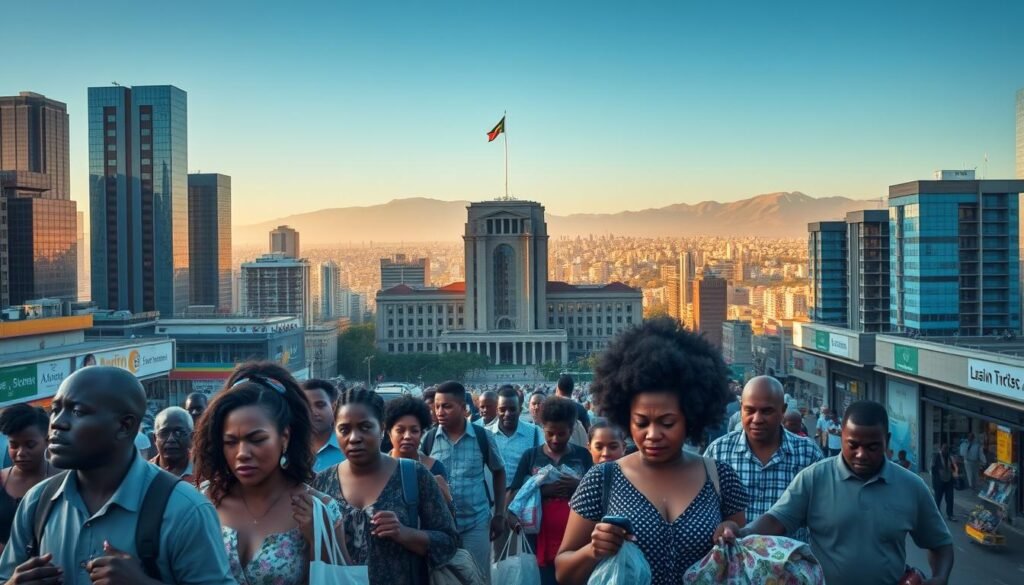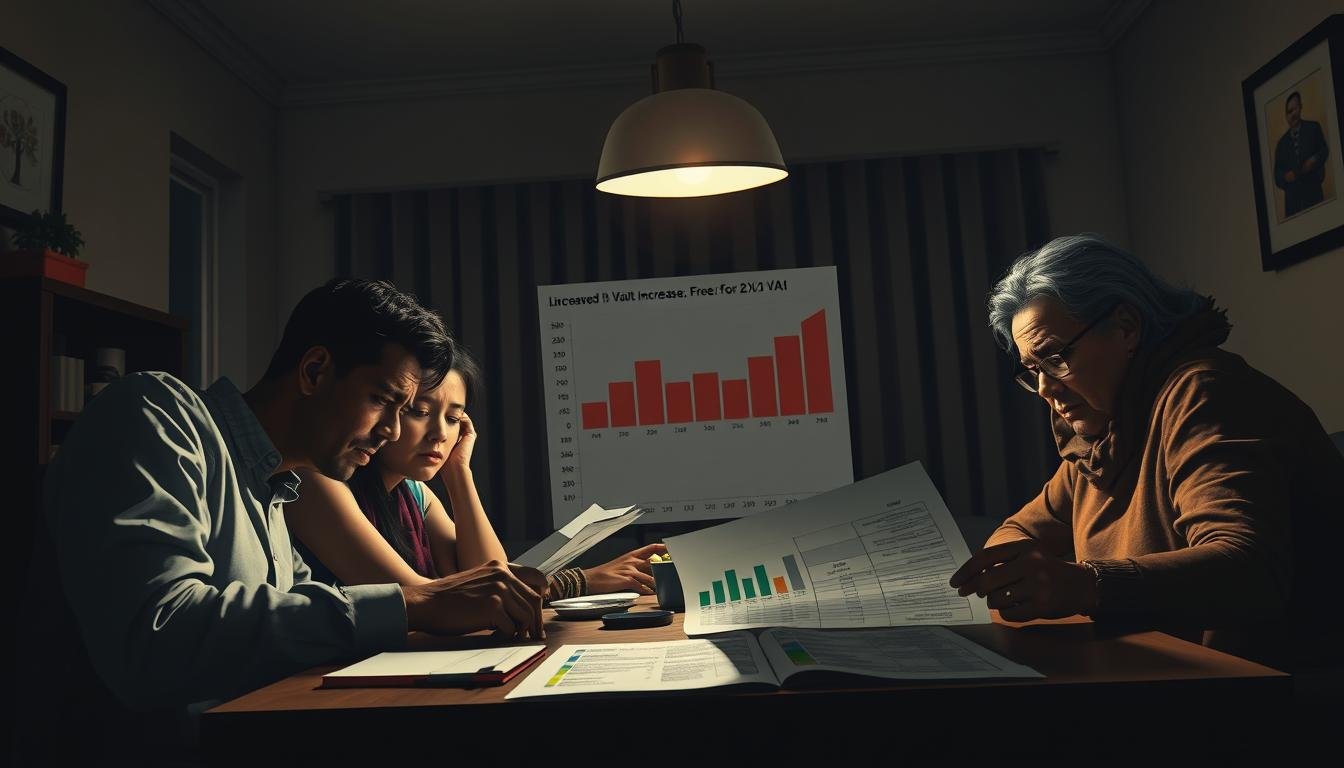A 2% VAT increase in South Africa could add R58 billion to the government’s revenue in 2025/26, offering significant fiscal relief but fundamentally impacting household budgets nationwide. Such an increase would raise the VAT rate to 17%, affecting prices across most goods and services. For consumers, this change would ripple through daily purchases, from groceries and fuel to utilities and services, potentially reshaping spending patterns and household financial planning. While higher-income households could absorb these increases more readily, middle- and lower-income families might need to make substantial adjustments to their monthly budgets.
The impact would extend beyond individual purchases, potentially influencing broader consumer behaviour and economic activity. Businesses might face changing customer spending patterns, while consumers could seek alternative products or adjust their consumption habits. This shift would be particularly significant given South Africa’s current economic challenges, including high unemployment and rising living costs.
Knowing how a 2% VAT increase affects consumers, including how it might change spending in South Africa, is crucial.
Key Takeaways
- A 2% VAT increase could generate an estimated additional R58 billion in government revenue in 2025/26.
- The current VAT rate is 15%, and a 2% increase would bring the rate to 17%.
- The proposed VAT increase may significantly impact the average consumer, with a 2% VAT rise potentially affecting South African consumers.
- Understanding the impact of VAT increases is crucial for South African consumer spending.
- The VAT increase could influence daily household expenses and the overall economy.
- Low-income households may be disproportionately affected by the VAT increase.
Understanding the Proposed VAT Increase
The proposed VAT increase of 2% could have big tax implications for South African consumers. The current VAT rate is 15%, unchanged since 2018. If it increases to 17%, it could rise to R58 billion by 2025/26.
The economic effects of this increase worry many, especially those in low-income households. The 2022/23 Income and Expenditure Survey shows that the poorest spend a lot on VAT-free food. The government plans to lose about R2 billion in 2025/26 by not taxing some food items.
Some important points about the proposed VAT increase are:
- The current VAT rate is 15%, with a potential increase to 17%.
- The proposed increase aims to raise more money for the government.
- The change in VAT rate could greatly affect consumers, but mostly those with lower incomes.
The government needs R252.6 billion for extra spending over the next three years. This includes R108.65 billion in 2025/26, R74.5 billion in 2026/27, and R69.3 billion in 2027/28. They also plan to spend R2 billion to extend the SRD grant until March 2026 and R4 billion for the 2025 public-service wage agreement.
Immediate Impact on Daily Household Expenses
The proposed VAT increase from 15% to 17% in South Africa will greatly affect daily expenses. This two-percentage-point rise will likely increase the cost of goods and services, impacting financial planning for many.
The government aims to help by introducing “spending support” measures. These include increases in social grants and fuel levy relief, which are intended to soften the blow of the VAT hike.
The VAT increase will hit about 30 million South Africans living below the poverty line hard. The government plans to spend 5.8% more, totalling R2.6 trillion. However, consumers will still have to adjust their budgets to deal with the higher costs.
- Review and adjust your budget to account for increased costs
- Take advantage of “spending support” measures, such as increased social grants
- Find ways to cut expenses and improve financial planning
By understanding the impact of VAT increases on daily expenses, you can take steps to adjust. This way, you can minimize the impact of tax reform and navigate the South African economy’s changes.
How Different Income Groups Will Be Affected
A 2% VAT increase will impact different income groups in South Africa in different ways. Lower-income families will feel it the most. They spend more of their income on goods with VAT, which will raise their costs significantly. Currently, the lowest income group pays about R1,600 in VAT each year. With a 2% VAT hike, this could go up by R213, impacting their daily spending.
Low-Income Households
Low-income families will be hit hard by the VAT increase. They spend a lot on essential items. Some of the main challenges they face include:
- Higher food prices make basic needs harder to afford
- More expensive transportation, limiting job and education access
- Increased costs for household items like paraffin and cooking fat
Middle-Income Families
Middle-income families will also feel the effects of the VAT increase, but less so than low-income ones. They will have to adjust their budgets to cover the higher costs, which could impact their spending and the overall economy.
High-Income Earners
High-income earners will be less affected by the VAT increase. They spend less on VAT-inclusive goods. Yet, they might still notice the increase in their living costs, mainly if they buy luxury items.
Effect on Essential Goods and Services
The VAT increase in South Africa will hit consumers hard, mainly on basic needs. With a 15% VAT rate, a 2% hike means higher prices for food, healthcare, and education. Low-income families will feel it the most, as they spend a lot on necessities like electricity and transport.
The VAT increase will make it tough for people to buy what they need. But, the government plans to help by making more food items VAT-free. This should ease the burden for those who can’t afford much.
- Food items, such as meat, dairy products, and canned goods
- Healthcare services, including medical consultations, hospitalization
- Education, including school fees and educational materials
This will raise the cost of living in South Africa. People will need to find ways to spend less. Understanding the impact of VAT increases on daily life is key.
Impact on Luxury and Non-Essential Items
The VAT rise will have a big impact on people’s spending habits, mainly on luxury and non-essential items. As the VAT hike’s effects on the South African economy grow clearer, shoppers might have to change their spending habits. This could mean less money for entertainment, travel, and shopping.
A 2% VAT increase could change how people shop. Some might choose cheaper options or spend less on things they don’t need. The way South Africans spend money will be watched closely, as they’ll have to decide what’s most important to them.
Some areas that might see changes include:
- Entertainment and leisure activities, such as dining out or attending events
- Travel and tourism, including domestic and international trips
- Retail shopping, mainly for luxury or non-essential items
As people get used to the new VAT rate, businesses will also have to rethink their prices. The effect of VAT increases on consumers is closely linked to the South African economy, so businesses will need to consider these changes to stay competitive.
If VAT Rises 2%: What It Could Mean for South African Consumers in Different Sectors
A 2% VAT increase will have big effects on South African consumers. The consumer response to the VAT increase will change how people buy goods and services. The South African VAT rate change analysis shows that the VAT could go up to 17% from 15% now.
The if VAT rises 2% scenario will hit sectors like education, healthcare, and transportation hard. The government wants to use more VAT money for these areas, which could mean better schools, healthcare, and public transport.
Some key sectors that might feel the VAT pinch include:
- Education: More VAT money could mean better schools and learning tools.
- Healthcare: More funding could lead to better health services for everyone.
- Transportation: More money for public transport could make getting around easier.

In short, a 2% VAT increase will have big effects on South African consumers. The increase in consumer response to VAT will change buying habits. The government’s plans to use more VAT money could improve services and infrastructure.
Business Response and Price Adjustments
A VAT increase can have a big impact on consumers. Businesses in South Africa must find ways to adapt. With prices going up, people might change how they spend their money.
Companies might decide to keep prices the same or raise them. The retail sector, in particular, could face big changes. To help soften the blow, they might offer discounts or promotions.
The service industry could also see changes. People might spend less on non-essential services. Yet, some businesses could offer new services or products without VAT, which could help reduce the impact on consumers.
In short, how businesses react to a VAT increase is key. By understanding the effects and adjusting prices, they can lessen the blow to South African consumers.
| Industry | Potential Impact |
|---|---|
| Retail | Price increases, changes to pricing strategies |
| Service | Changes to consumer spending habits, potential for new services or products |
Government Revenue and Public Services
The proposed 2% VAT increase is expected to bring in R58 billion more for the government in 2025/26. This extra money could fund important public services. It will greatly impact the South African economy, helping to support key services like education and healthcare.
The VAT hike’s consequences will affect many areas, including consumer spending. Households will face higher living costs. However, the government plans to use the extra money for vital areas, which should lessen the negative effects of the VAT increase.
Some of the key uses for the extra revenue include:
- R29 billion for provincial education departments
- R28.9 billion for healthcare, including hiring doctors and buying medicines
- R81 billion for the Department of Home Affaidigitizationtion to employ more staff
The government’s move to raise VAT will significantly affect the South African economy. It’s crucial to watch how the VAT hike’s consequences impact consumer spending and government revenue. By using the extra money wisely, the government can help the economy grow and lessen the VAT increase’s negative effects.
Economic Growth and Consumer Spending Patterns
A 2% VAT increase will have big effects on the economy and how people spend money. Taxation changes can affect many things, and in South Africa, a vast increase might make people spend less, slowing down economic growth.
Studies show that a VAT hike could reduce people’s spending, which could hurt the economy. It’s important to consider these financial implications for the economy.
Some important points about VAT increases and their effects include:
- Less spending: Higher VAT prices can mean people buy less.
- Slower growth: Less spending can hurt the economy by reducing demand.
- More poverty: VAT increases can make it harder for low-income families to afford basics.

To lessen the negative effects of VAT increases, we need to consider the financial implications. We should help low-income families and boost economic growth. This could mean giving more social grants and taxing the rich more.
By understanding how VAT increases affect spending and growth, we can make better plans. This will help the economy grow and reduce poverty.
Strategies for Consumer Adaptation
If VAT rises 2%, South African consumers will have to change how they spend money. They can use budgeting and smart shopping to handle this change. Knowing how VAT will affect their daily costs helps them make better financial choices.
Adjusting household budgets is a key step in adapting to VAT changes. It means finding ways to spend less and use that money wisely. Being more careful with money, like buying only what’s needed and looking for deals, can lessen the impact on consumers.
- Creating a detailed budget that accounts for the increased VAT
- Shopping during sales periods or using coupons to reduce costs
- Avoiding impulse purchases and sticking to essential items
By using these strategies, South African consumers can lessen the impact on consumers and keep their quality of life even if VAT rises 2%. They need to keep up with the changes and adjust their spending habits. This way, they minimise the negative effects.
International Comparisons and Lessons
Looking at VAT increase effects on the South African economy means checking out other countries. Many have raised VAT and seen big gains in revenue. For example, VAT makes up 12% to 30% of total revenue in most places or about 5-10% of a country’s GNP.
It’s important to see how VAT changes consumer spending. In Japan, a 3% VAT has worked well, with small business exemptions. But, countries like Indonesia and Norway have seen more evasion after raising VAT rates.
Here are some VAT examples:
- Over 50 countries use VAT, with 10 more thinking about it.
- In the UK and US, 75-85% of businesses might need to register for VAT and RST.
- South Africa’s VAT rate is 10%, since September 1991.
By studying these examples, South Africa can learn about VAT’s impact. This knowledge helps make smart VAT policy choices. It supports the South African economy and consumer spending.
Conclusion
As we wrap up our look at a possible 2% VAT increase in South Africa, shoppers face big financial changes. The government wants more money, but this will hit everyone’s wallet. It will change how we spend on everyday items and even treats.
Adapting to this change will be key. We need to budget wisely and shop smart, which will help us manage the new costs.
Looking at VAT rates around the world, South Africa’s hike might change how we shop across borders. This could lead to more economic shifts. It’s up to policymakers to find the right balance between more money for the government and not hurting people with low incomes too much.
Dealing with a VAT increase will require teamwork from shoppers, businesses, and the government. By keeping up with news, adjusting our spending, and pushing for fair policies, we can get through this tough time and emerge stronger as a nation.


Leave a Reply